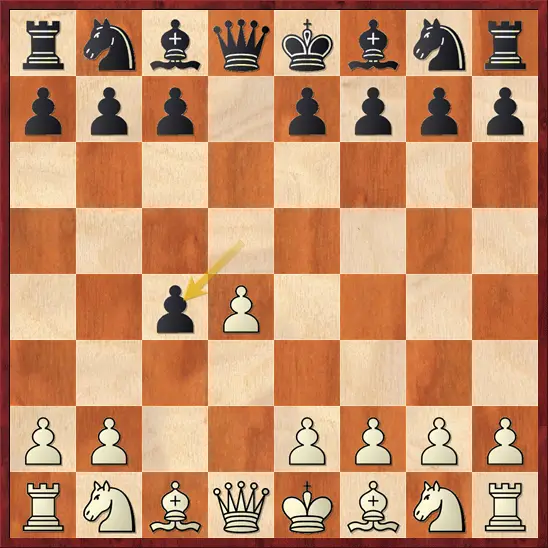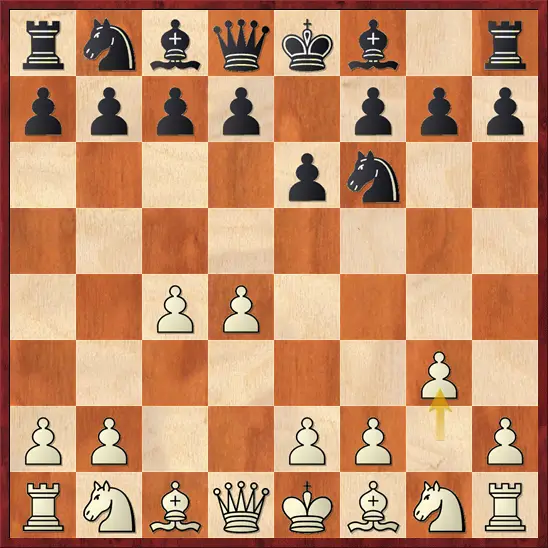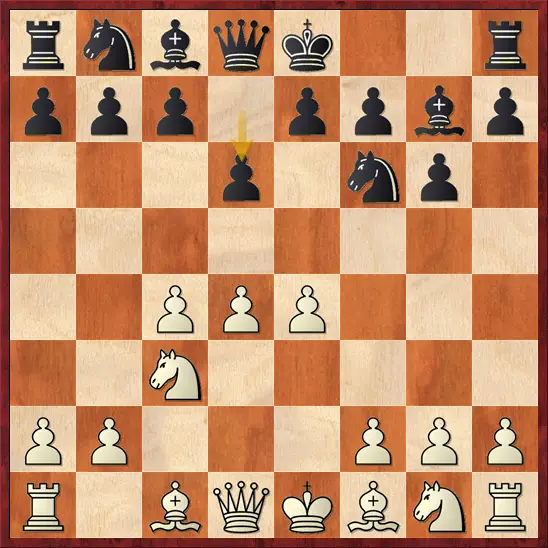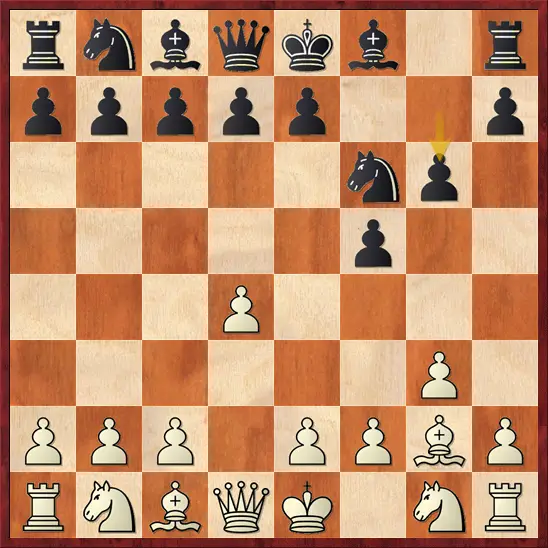The Queen’s pawn opening begins with 1.d4 and is one of white’s most popular options for starting a chess game.

White takes control of the centre and opens lines for the development of his pieces. Many strong players prefer to start the game with 1.d4 rather than 1.e4.
Why play 1.d4?
- If you are a positional player you can play 1.d4
- If you want to avoid complicated chess and play simply
- If you want to avoid too much theory.
All openings after 1….d5:
Black also aims to control the same amount of space as white and open lines for his pieces.

Queen’s Gambit
This opening starts with 1.d4 d5 2.c4. White White aims to sacrifice a pawn temporarily and create rapid development for his pieces and take control of the centre. Now black has many responses…..
1. Queen’s gambit declined:
This opening starts with the move order 1.d4 d5 2.c4 e6. Black declines and gambit offer and wants to recapture on d5 with the e pawn.

This opening has been played a lot by top players and is very common even today.
2.Slav defence
This opening starts after 1.d4 d5 2.c4 c6. This is a very solid opening and black mainly aims for equality in these lines.

3.Semi Slav defence:
This variation starts after the moves 1.d4 d5 2.c4 c6 3.Nf3 Nf6 3.Nc3 e6. It is a very theoretical opening and the move order goes very deep.

This position has reached a million times at high-level chess and remains very popular at all levels. Black threatens to capture the pawn on c4 and defend it with ….b5. 5.Bg5 and 5.e3 are two main moves here although 5.Qb3, 5.cxd5 and 5.g3 can be played.
4. Queen’s gambit accepted:
This line starts after 1.d4 d5 2.c4 dxc4

Black cedes control of the centre and now white has good control of the centre. Black aims to hit back white in the centre with a later…..c5.
5. The Chigorin defence:
This opening is named after 19th Century Russian master Mikhail Chigorin. It is an uncommon way of meeting the Queen’s gambit that begins after 1.d4 d5 2.c4 Nc6

This opening violates several opening principles and in return black gets quick development for his pieces.
6.Alabin counter gambit:
1.d4 d5 2.c4 e5 is the starting move order of this opening.

This is also a very uncommon opening. In exchange for the gambit pawn, black gets more space and a strong pawn at d4 which limits white’s pieces.
7. Queen’s gambit symmetrical defence:
This opening is also called the Austrian defence and begins with 1.d4 d5 2.c4 c5.

Black copies white’s moves and tries to equalize. However white has an advantage in this line.
White plays some system openings which are structure-specific:
1. London system:

1.d4 d5 2.Bf4 is the starting position of the London system. White develops his dark-squared bishop outside the pawn chain before playing e3. White’s first few moves are almost always the same….Nd2,c3.Bd3,Nf3,0-0 etc
White plays the London system to avoid theory and keep the game in his comfort zone.
2. The Colle system:
The Colle system starts with 1.d4 d5 2.Nf3 Nf6 3.e3

The Colle is basically reversed semi-slav for white. There are various set ups for white, he can either play b3 Bb2 or play for the central break e4 after playing c3 and e3.
3.The Torre attack:
Unlike London, in the Torre, the white bishop goes to g5. It has many move orders:
1.d4 Nf6 2.Nf3 e6 3.Bg5 another one is 1.d4 Nf6 2.Nf3 g6 3.Bg5

White aims to avoid main line theory and play simple chess. A long positional battle awaits for both players.
4. Trompowsky attack:
This is an aggressive opening that starts with 1.d4 Nf6 2.Bg5

White plays Bg5 on the second move to create the positional threat of taking on f6 to inflict doubled pawns on black. Generally black has 3 replies to 2.Bg5 which are 2…Ne4, 2…d5 and 2….e6.
Other defences for black after 1….Nf6:
Black players generally plays 1….Nf6 to enter into openings of their choice and aim for a theoretical battle.
1.Nimzo Indian defence:
This opening was developed by Aron Nimzowitsch and it starts with the move order 1.d4 Nf6 2.c4 e6 3.Nc3 Bb4

Nimzowitsch’s idea was to control the centre with pieces rather than pawns. Black aims to double the white pawns on c3 which can be a weakness and can be exploited at a later stage.
2. Queen’s Indian defence:
This opening arises after 1.d4 Nf6 2.c4 e6, here white players can play 3.Nf3 in order to avoid the Nimzo. 3….b6 enters the Queens Indian territory.

Black aims to control the e4 and d5 squares with pieces rather than pawns. It is a very solid and positional opening.
3. Bogo Indian Defence:
It starts with the move order 1.d4 Nf6 2.c4 e6 3.Nf3 Bb4+ and is named after the master Efim Bogolyubow.

By playing Bb4+, black aims to disrupt the coordination of the white pieces. If 4.Bd2, the bishop is misplaced here as it is best placed on b2. 4.Nc3 transposes to the Nimzo and 4.Nbd2 pins the night for some time.
4. Catalan opening:
This is a refreshing alternative to the Queen’s gambit and has many move order tricks. The main move order is 1.d4 Nf6 2.c4 e6 3.g3

By playing 3.g3 White wants to put his Catalan bishop on g2 which is his strongest piece. This bishop exerts strong pressure on the black queenside and create problems for black pieces to develop. If black achieves the break ……c5 he is fine in these lines and White’s main aim is to avoid it.
This is a very aggressive opening and is Garry Kasparov’s favourite. It starts with the move order 1.d4 Nf6 2.c4 g6 3.Nc3 Bg7 4.e4 d6
(There is also the fianchetto variation which starts with 1.d4 Nf6 2.c4 g6 3.g3)

Black gives white a strong centre and plans to undermine it at a later stage with pawn breaks. This opening has a lot of theory and both players should be well prepared before entering these lines.
6.Grunfeld Defence:
This is one of the hypermodern openings which is very aggressive. It starts with the move order 1.d4 Nf6 2.c4 g6 3.Nc3 d5

Black gives white more space and aims to attack the white centre with a later…..c5. Black’s g7 bishop also helps him to create pressure on the white centre. This opening is a favourite of French grandmaster Maxime Vachier Lagrave.
7.Benko Gambit:
This is another aggressive opening for black that starts with 1.d4 Nf6 2.c4 c5 3.d5 where black plays 3….b5.

Black offers a pawn in return for long lasting queenside pressure. He exerts pressure down the semi open a and b files, with his major pieces and the bishop on g7. White players should be well prepared in this line to avoid being in a passive position. It is not very common in top level nowadays but can be seen in club level from time to time.
8.Modern Benoni:
1.d4 Nf6 2.c4 c5 3.d5 e6 4.Nc3 exd5 4.cxd5 d6

This is the starting position of the modern benoni. Again, white has more space and a strong pawn on d5 which can become a passer if black is not careful. Black hopes to create counterplay on the queenside with the …..b5 break. White aims to play e4-e5 In order to create a passed pawn.
9.Delayed Benoni:
This benoni starts with the move order 1.d4 Nf6 2.c4 c5 3.d5 g6

This opening has been kind of new and is less explored, with room for improvement for both sides. The general plan for black is to wait and create play on the queenside with ……b5.
10. Dutch Defence:
1.d4 f5 is the starting position of the Dutch defence. This is a very aggressive opening with a lot of variations and move order tricks.

Black’s 1….f5 stakes a claim to the e4 square and plans for a future attack on the white kingside. However the move f5 also weakens black on the light squares. The Dutch is considered dubious today and is rarely seen in top-level chess but club players have enjoyed it with great success.
Dutch uncommon lines:
1. Staunton Gambit
This gambit starts with 1.d4 f5 2.e4

White sacrifices a pawn in return for rapid development.
2 Nc3 variation:
1.d4 f5 2.Nc3

This line is played by many players to avoid the main lines of the dutch defence. White develops his queenside pieces quickly and prepares to castle queenside.
Main line dutch:
1. Leningrad Variation:
This is the most aggressive dutch and starts with the move order 1.d4 f5 2.g3 Nf6 3.Bg2 g6

Black’s structure resembles that of a King’s Indian with the move f5 already played. He prepares to attack white on the kingside and plans …..e5.
2. Stonewall Variation:
The Stonewall dutch is a setup where black creates a pawn “teeth” in the center on the light squares f5,e6,d5 and c6. This gives black a fair amount of space and good control over the e4 square. 1.d4 f5 2.g3 Nf6 3.Bg2 e6 4.c4 d5 5.Nf3 c6 is the starting position of the stonewall dutch.

Black’s only problem in this position is his light-squared bishop which he often re-routes to the kingside by the manoeuvre Bd7-e8-h5.
3. Classical Variation:
In the classical dutch, black places his pawns on d6 and e6 and plays a waiting game. It starts with the move order 1.d4 f5 2.g3 Nf6 3.Bg2 e6 4.Nf3 Be7 5.0-0 0-0 6.c4 and now black plays 6….d6.

The classical dutch is very aggressive and at the same time very flexible. Both players have a number of ideas. Black generally plays…..Ne4, Qe8-h5 followed by the e5 break in order to attack white on the kingside.
Other defences for black:
1. Modern defence:
The modern defence starts with 1.d4 g6 and is a hypermodern chess opening in which black allows white to build a strong centre with pawns on e4 and d4, and aims to undermine it later.

It is a highly transpositional opening and can transpose to many lines, especially the King’s Indian.
2. English defence:
The English defence starts with the moves 1.d4 b6

White often gains a strong center but black puts pressure on it by playing moves like ….Bb7,…Bb4 and sometimes ….Qh4. The pawn structure resembles that of the French defence at times.
3. The Black Knight’s Tango:
This is another uncommon opening that begins with the moves 1.d4 Nf6 2.c4 Nc6

Black develops quickly and has a good pawn structure, white on the other hand has more space in the center. It may transpose to some variations of the King’s Indian Nimzo Indian, Chigorin defence or the English opening.
Summary:
If you are a positional player and like to play closed positions then you should start playing 1.d4. The games are very strategic and planning based and usually take a long time to end.1.d4 is all about patience!
